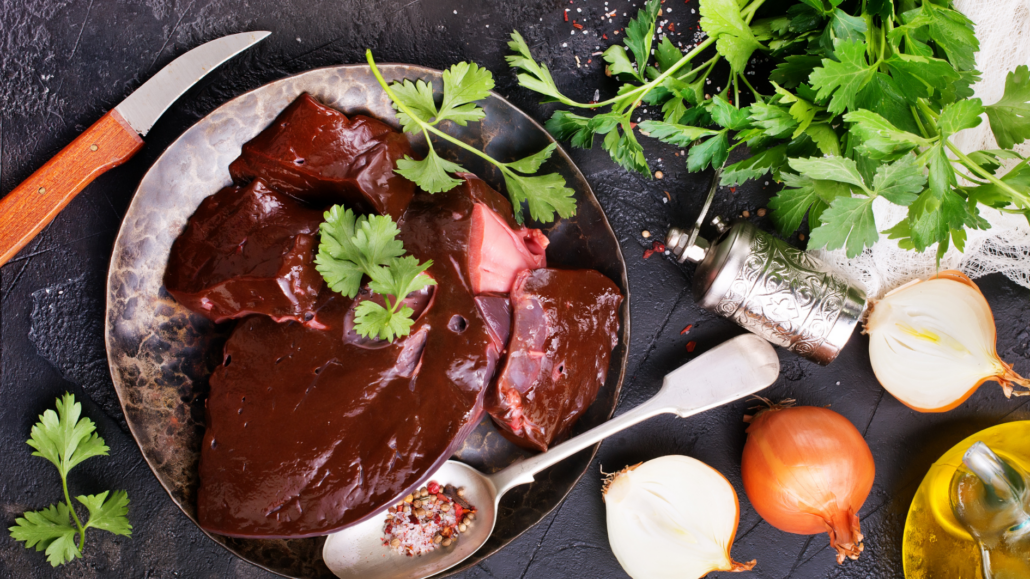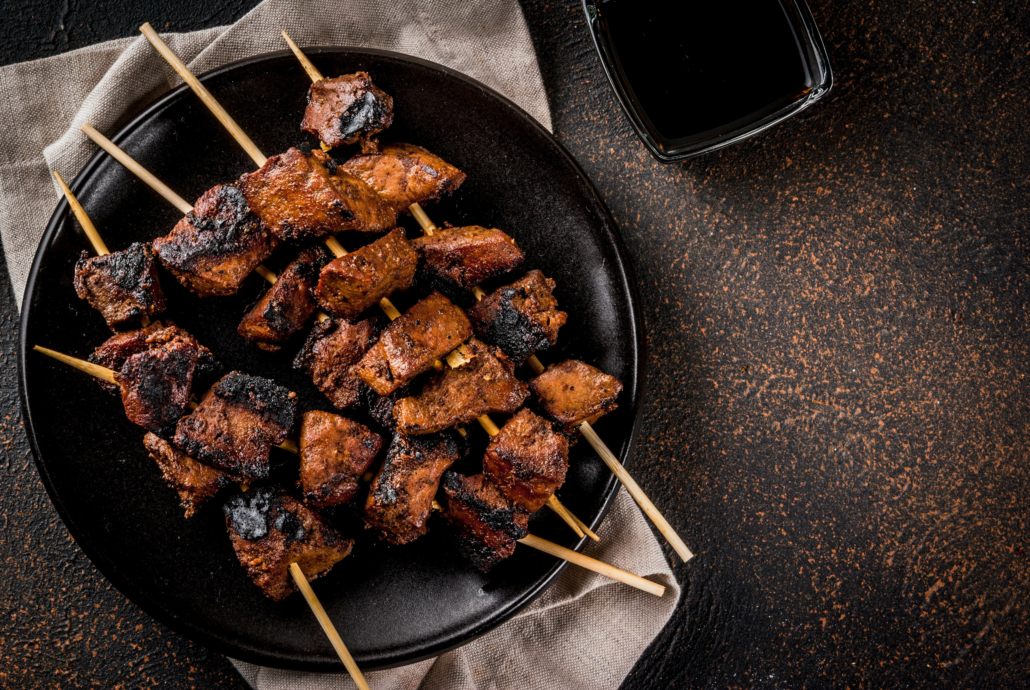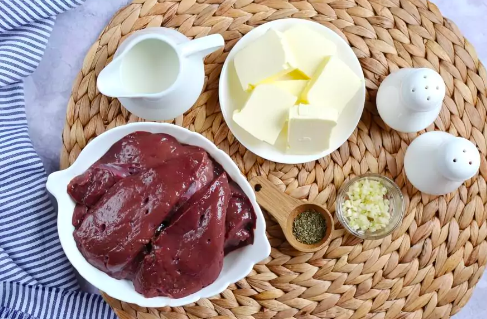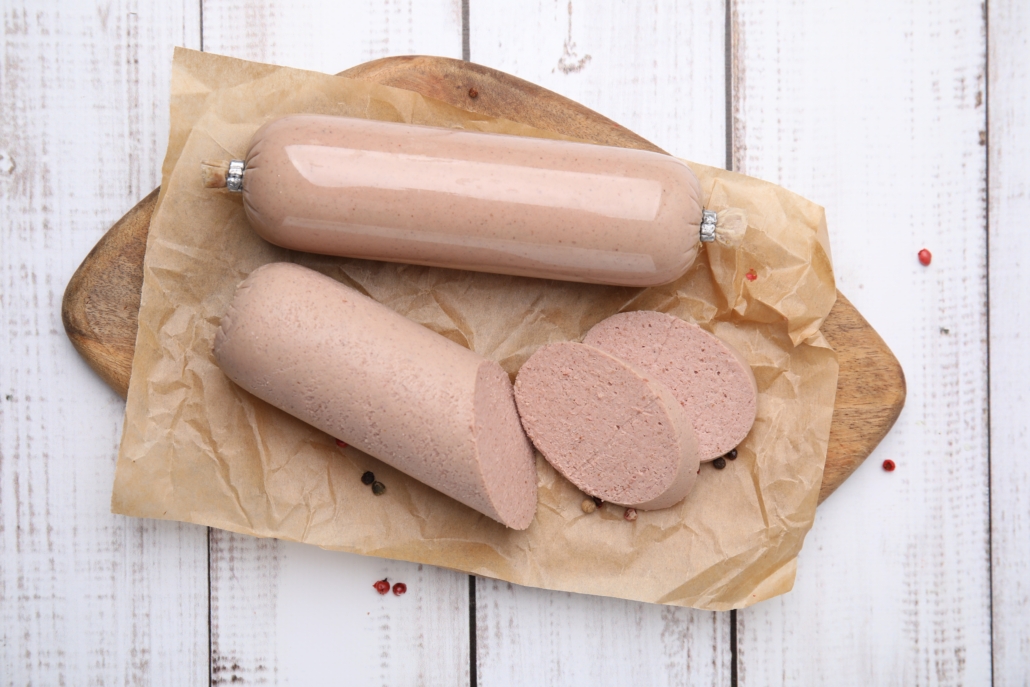We include products in articles we think are useful for our readers. If you buy products or services through links on our website, we may earn a small commission.
Duck Liver: Health Benefits, Nutrition, and Easy Recipe
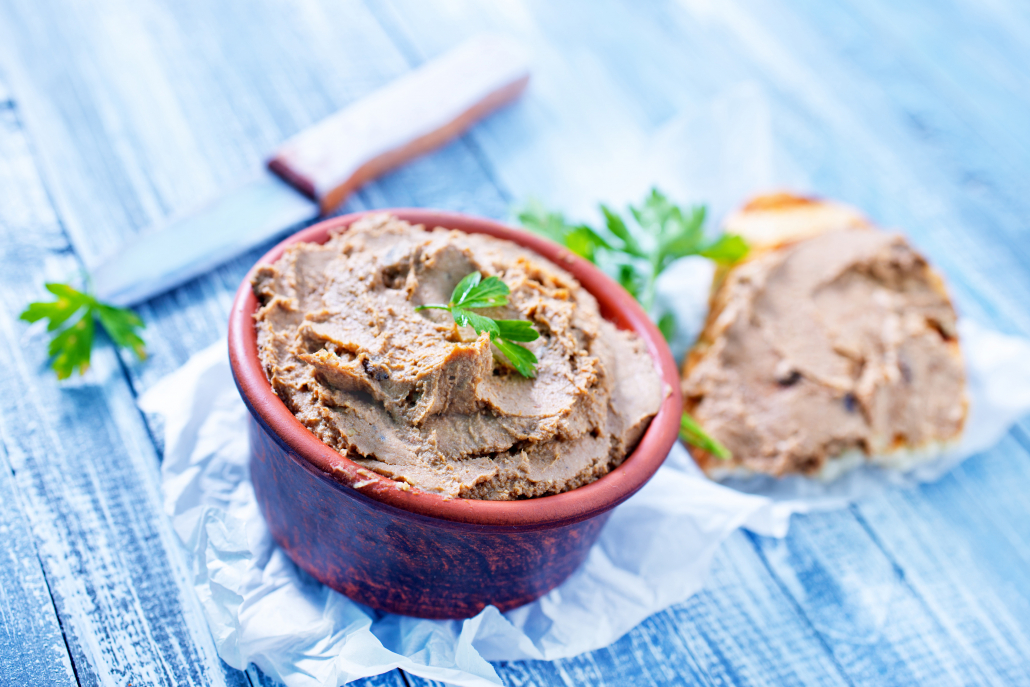
For one of the most nutritious foods on earth, duck liver flies under most people’s culinary radar (pun intended). Duck liver is a fantastic source of healthy fats, complete proteins, and is loaded with B vitamins, vitamin A, copper, and heme iron. When raised as foie gras, duck liver is extremely rich in anti-inflammatory monounsaturated fatty acids, and highly satiating saturated fats.
In this article, we’ll explore the nutrition and benefits of duck liver, and offer a delicious recipe.
Table of Contents
Duck Liver Nutrition
Like most organ meats, duck liver provides a remarkable abundance of essential and highly bioavailable macro and micronutrients. Many of these nutrients are only found in meat.
Let’s take a closer look at just how nutrient-dense duck liver is.
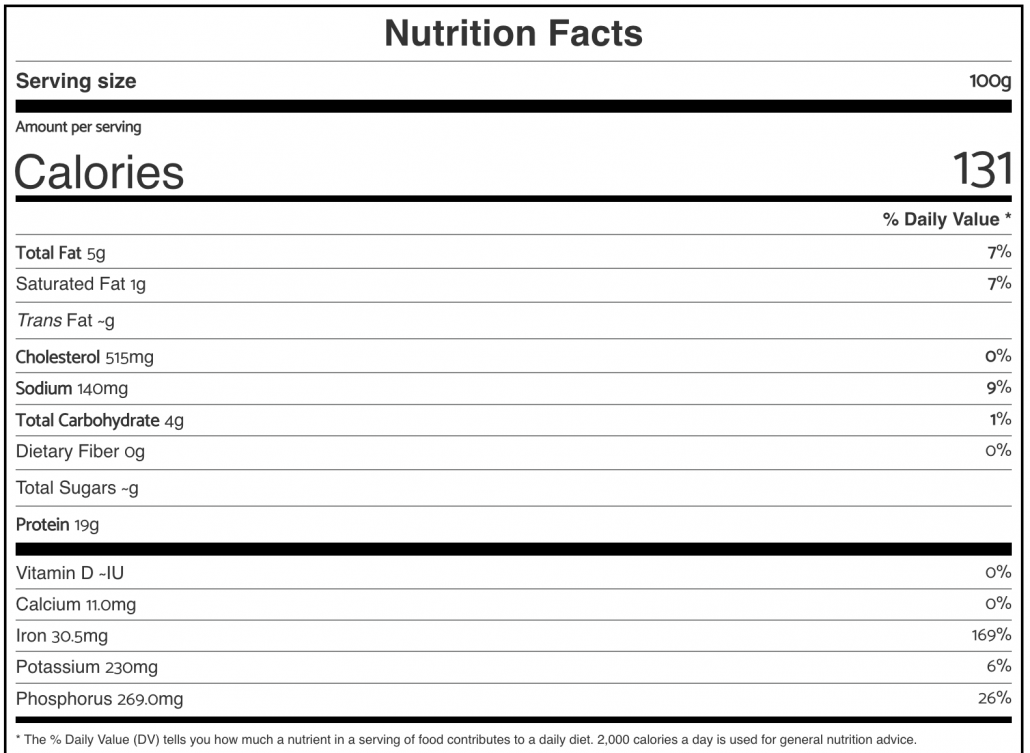

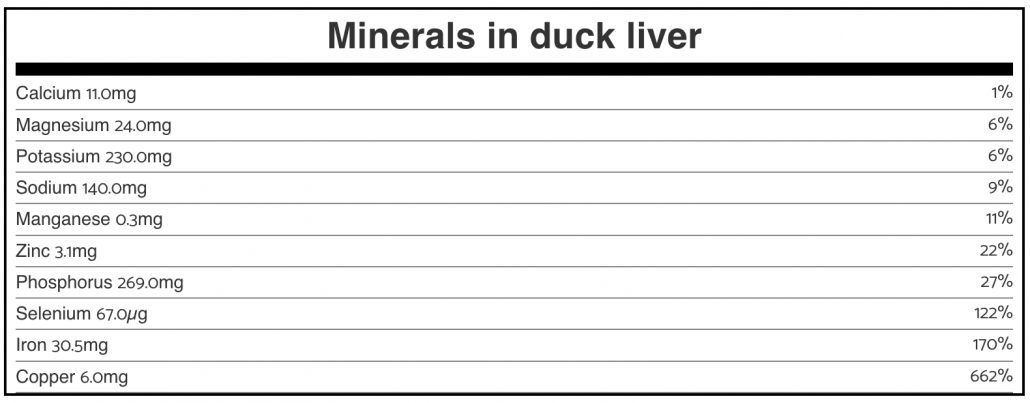
Duck Liver Nutritional Benefits
Duck liver is rich in healthy fats along with micronutrients like vitamin B12, vitamin A, copper, and iron.
To better understand the benefits of duck liver, let’s take a closer look at the role of each of these important nutrients.
Vitamin B12 in Duck Liver
With 2250% of your RDV of Vitamin B12, duck liver is one of nature’s most concentrated sources of this essential vitamin, only slightly behind beef liver.
Though over 2000% of your RDV may sound like too much, you don’t have to worry about toxicity. In fact, the body will simply eliminate excess b12 through the urine, while storing some in the liver, and access it for use even years later [1].
B12 is found mostly in animal foods. This makes it difficult to obtain for vegans or vegetarians [1] Symptoms of B12 deficiencies include:
- Chronic fatigue [2]
- Psychiatric problems [3]
- Neurological problems [4]
- Increased risks of Alzheimer’s disease [5]
- Intergenerational neurological disorders [6]
B12 is essential for maintaining a healthy nervous system, it supports the production of DNA and red blood cells, and maintains cognitive function.
A 2013 randomized control trial found that supplementation of Vitamin B12 significantly improved depressive symptoms [7].
Studies have also shown that vitamin B12 can decrease homocysteine levels associated with a risk of heart disease [8][9][10].
Vitamin A
You may have heard of Beta Carotene–a Vitamin A precursor found in plant foods that are often referred to as vitamin A. However, it is far less bioavailablele–useful in the body–compared to the preformed Vitamin A found in duck liver [11].
At 1330% of your RDV of vitamin A per 100 grams, duck liver is one of nature’s most potent sources of this nutrient.
The vitamin A in duck liver can play a vital role in cellular regeneration of the eyes and skin. It’s also a precursor (building block) for important eye pigments like rhodopsin.
The vitamin A in duck liver can also support the thymus gland that is critical to a healthy immune system, improve your brain’s metabolic rate, support heart health, and reinforce the mechanical barrier function of the skin and inner linings of the body, especially the intensities [12] [13].
Heme Iron
A single serving of duck liver provides 170% of your RDV of iron.
Similar to vitamin A, the version of iron provided by duck liver known as “heme iron” is far more bioavailable than the iron you get in plant foods.
Heme iron plays a key role in supporting immune function, cognition, and energy metabolism [14].
Copper
At 662% of your RDV of copper, duck liver is one of the most abundant food sources of copper.
This mineral is critical to the maintenance of blood vessels, and the creation of connective tissue.
Copper also plays a key role in immune function, nervous system health, gene activation, the development of the brain, hormone creation, and fertility [15].
Studies show that women deficient in copper can negatively impact fertility by disrupting estrogen metabolism.
Zinc
Zinc is a fairly difficult mineral to obtain from food, making the 22% RDV provided by duck liver is quite substantial.
As with other minerals found in duck liver, its zinc is 400% more bioavailable than zinc found in grains [16].
In fact, consuming grains high in phytic acid can bind to zinc leading to mineral deficiencies.
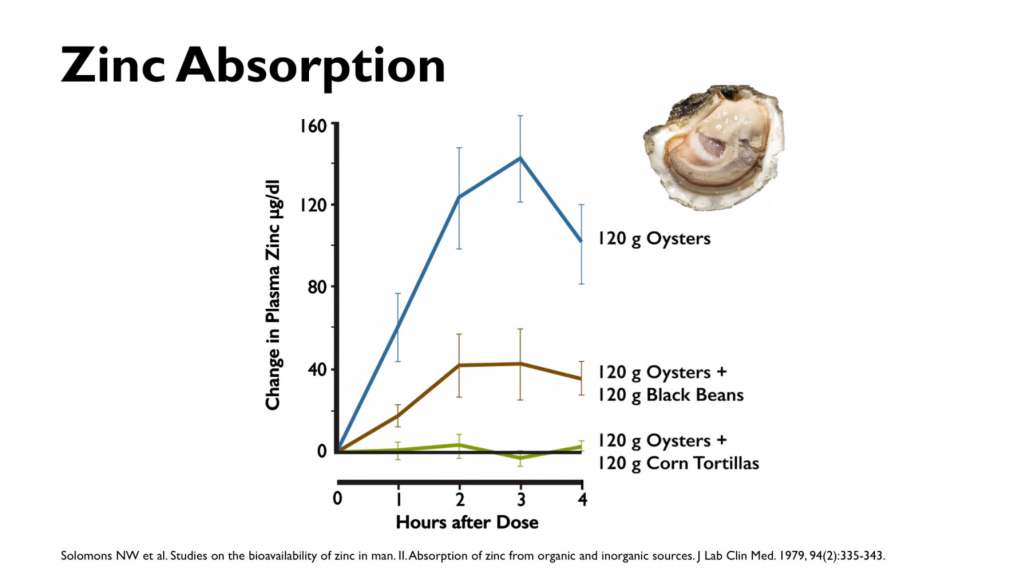
Deficiencies in zinc negatively affect motor development and cognitive development in children. In adults, low levels of zinc are associated with erectile dysfunction and lower sperm count in males.
Zinc also protects and supports heart health, is essential in insulin formation, and has been shown to increase glycemic control for diabetics [17][18].
Selenium
At 120% of your RDV selenium per 100 grams chicken liver is one of the most abundant sources of this pro-thyroid, pro-immunity mineral.
Selenium is also a vital component of endogenously produced proteins called selenoproteins. These special proteins play a key role in reproductive health and DNA synthesis [19].
Selenium also acts as an antioxidant. This means it can reduce oxidative stress by reducing damaging free radicals [20]. It also increases levels of the powerful antioxidant glutathione [21].
Selenium may also have powerful anti-cancer properties. A review of 69 studies including data from over 350,000 people revealed that high blood levels of selenium were associated with a lower risk of various cancer types, including, lung, breast, colon, and prostate cancers [22].
The possible neuroprotective properties of selenium are apparent in the fact that patients with Alzheimer’s disease have low levels of selenium [23][24].
Finally, selenium also benefits lung health. A study found that patients with asthma who had higher levels of selenium had better lung function [25].
Monounsaturated Fat
Most of the fat in duck liver foie gras is monounsaturated fat. Studies show that this anti-inflammatory fat may reduce the risk of heart disease [26][27].
Furthermore, high-quality modern studies show that the saturated fat in foie gras is not unhealthy. In fact, it’s part of a healthy diet [28].
The high-fat content in duck liver foie gras also makes it highly satiating–meaning it makes us feel fuller faster, and stay full for longer. This makes foie gras a great whole food substitute for highly processed foods that feed carb addictions [29].
Cognitive Performance
If you’re looking for more cognitive power and sustained focus, adding duck liver to your diet may help.
Numerous nutrients found in abundance in duck liver work together to support and enhance cognitive function, including:
- Selenium
- Copper
- Niacin (Vitamin B3) [30]
- Iron
Duck Liver vs. Duck Liver Foie Gras?
The traditional way to make foie gras is to force-feed birds with corn so that their livers become enlarged with fat. The liver is often 10x larger than normal. This supple fatty liver is what makes foie gras a delicacy [31].
Pâté de foie gras is the most popular form. It’s spreadable and mostly eaten on crackers and baguettes. Other forms of fried and raw foie gras are also fairly common.
Many places, like New York and California, consider this practice inhumane and have banned it
For instance, New York City passed legislation in October 2019 that’ll ban the food from the city [31[ [32].
However, France considers the practice part of their culinary culture and protects the practice [33]
The good news for people concerned about the well-being of animals is that many producers have adopted methods that don’t require force-feeding.
Easy Pan-Seared Duck Liver Recipe
The easiest way to prepare duck liver is a quick and simple pan searing method. It only requires 3 ingredients and takes around 10 minutes including prep-time.
Ingredients:
- 3 tablespoons butter, tallow, or ghee
- 2 or more duck liver, foie gras or standard
- fleur de sel or other high quality salt
- (optional balsamic vinegar)
Directions:
- Heat a frying pan over medium-high heat–cast iron is best
- Add butter or other animal fat
- Gently lay the livers into the pan, shake immediately to keep from sticking
- sear each side for around 90 seconds.
- Baste livers with the hot butter for 30 seconds
- Remove from pan and sprinkle with salt
- (optional) Add a drizzle of balsamic
Recipe for Preparing Your Own Duck Liver Pate
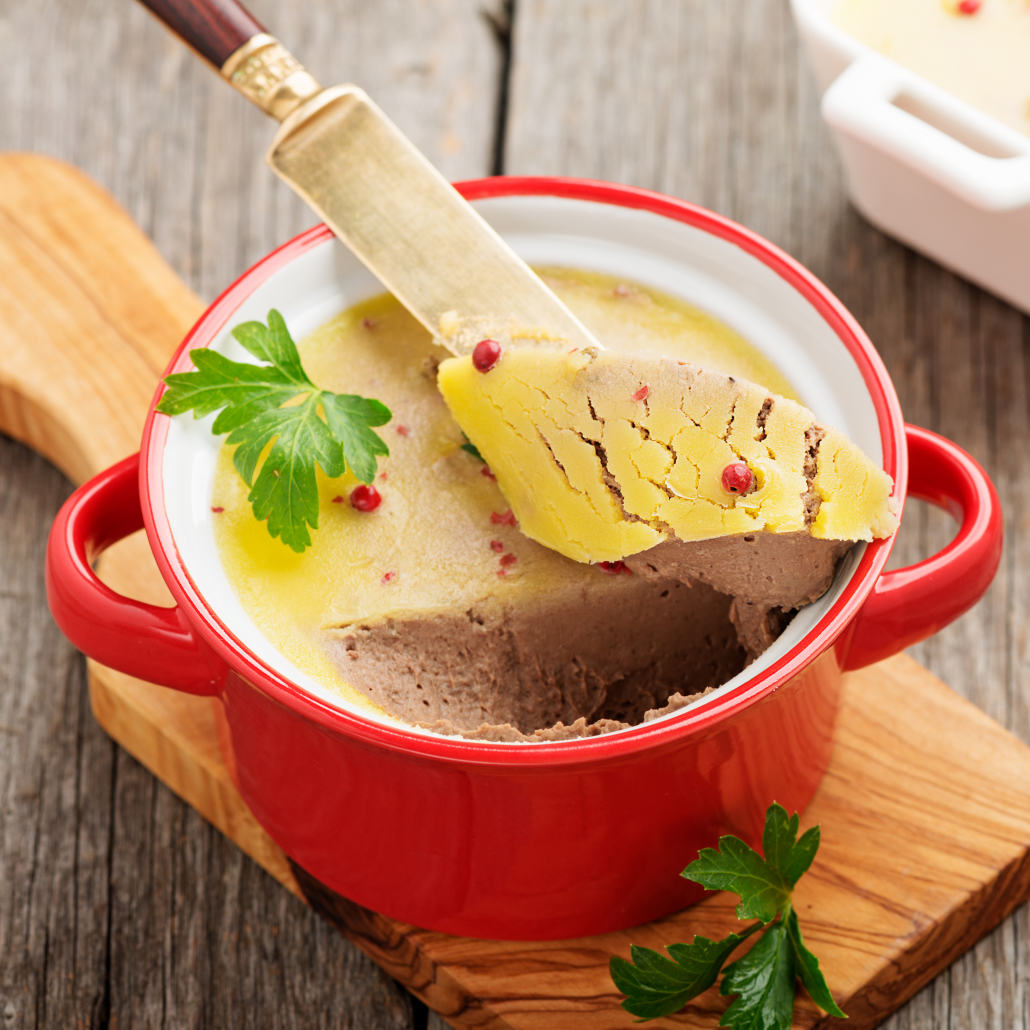
Duck liver is most commonly eaten as foie gras pâté. Though you can make a delicious pate with standard duck liver, and even chicken liver.
If you do want to make genuine foie gras pate, we recommend sourcing from non-force-feeding producers.
This simple duck liver pâté recipe requires only 6 ingredients:
- ½ pound duck liver
- ½ cup butter or duck fat
- 1 tbsp parsley minced (optional, eliminate on carnivore)
- ½ teaspoon salt
- ¼ teaspoon ground black pepper
Instructions:
- Trim the duck livers and remove any sinew or imperfections
- Melt a tablespoon of butter in a skillet over medium heat. Add shallots. Cook for 1-2 minutes
- Add duck liver to the pan
- Pan-fry each side until golden brown. 5-7 minutes total
- Add parsley in the last minute of cooking
- Remove from heat and let cool for 5 minutes
- Add to a food processor
- Add remaining butter or duck fat. Season with salt. Puree until smooth
- Pour into ramekin dishes or a container and chill for 4 hours, or overnight to set
Duck Liver: The Takeaway
Duck liver is good for you, in fact it’s one of the most nutrient-dense foods on earth. It offers an abundance of hard-to-get and highly bioavailable nutrients including selenium, iron, vitamin A, B vitamins, and copper.
The vital nutrients in duck liver work in concert to support numerous bodily functions including heart health, immune health, and cognitive function.
Eating duck liver and taking part in the nose-to-tail diet revolution is can be a delicious and cost-effective way to reclaim your metabolic and nutritional health.












